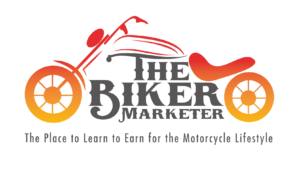Understand Your Audience
Identifying Target Demographics
When I first dove into SEO for motorcycle websites, one thing became painfully clear: you need to know who your audience is. Are they seasoned riders, or are they just starting? This makes a huge difference in how you tailor your content. For instance, seasoned bikers might appreciate technical articles detailing engine specs, while newbies might need more basic guides on choosing their first bike.
Listening to forums and engaging on social media is a great way to gauge what topics are trending and what people are curious about. The more you understand their needs, the better you can serve them with relevant content. Think of it as a conversation; you wouldn’t talk to someone about advanced technology if they don’t even know what a motorcycle is, right?
So, take the time to research and engage. Use tools like Google Trends or social media insights to see what’s buzzing in the motorcycle community today. It’s about meeting your audience where they are and giving them exactly what they need.
Creating Buyer Personas
Another crucial aspect of understanding your target audience is developing buyer personas. These are fictional representations of your ideal audience. I usually create these based on demographic data, interests, and riding habits. For instance, your personas might be ‘Weekend Warriors’ or ‘Daily Commuters.’
These personas help in crafting specific content that resonates more with your audience. When I write an article, I often think about which persona I’m targeting. What would ‘Tom, the Weekend Warrior’ want to know about the latest motorcycle gear? How can I structure my article to capture his interest? It’s all about empathizing with them.
Remember, the more detailed you are in creating your personas, the more effective your marketing strategies will be. Aim to blend creativity and data to give life to your audience’s profiles.
Conducting Surveys and Feedback
Surveys can be a game-changer. Initially, I was hesitant to ask for feedback, but let me tell you – people love to share their opinions, especially about something they’re passionate about like motorcycles. Consider setting up a quick Google Form survey. Ask them what they like and dislike about your website, what they want to read more about, and so forth.
Sometimes, the best insights come directly from your audience. Feedback can guide the direction of your content, ensuring it aligns with what your visitors want to see. You might discover new topics you hadn’t thought of or methods to enhance user experience.
Building a community isn’t just about throwing content out there; it’s a two-way street. When people see you care about their opinions, they’re more likely to engage with your content. And let’s be honest, that’s the kind of relationship you want to build.
Optimize Your Website Content
Keyword Research and Usage
Ah, keyword research—the holy grail of SEO. It’s like hitting the jackpot when you find the right phrases that people are actually searching for. I’ve used tools like Ahrefs and SEMrush to discover what keywords are popular in the motorcycle niche. Once you find those gems, pepper them throughout your content—but don’t go overboard! Keywords should fit smoothly into your text.
Picture this: you’re reading an article that forces keywords into every sentence. Annoying, right? Instead, I prefer to focus on providing value and letting the keywords naturally blend into my writing. This approach helps with SEO while making the experience enjoyable for readers.
Also, remember to look for long-tail keywords. These phrases often have less competition and actually reflect what consumers are searching for more specifically, like “best touring motorcycles for beginners.” This can significantly increase your chances of ranking higher for niche searches.
Crafting Engaging Titles and Meta Descriptions
Your titles and meta descriptions are the first things searchers see. It’s like the storefront of your website. If they’re not engaging or relevant, folks will just keep scrolling. I always aim to write compelling titles that spark curiosity while also including keywords. However, clarity is essential. Make sure that the title reflects what the article is actually about.
Meta descriptions play a pivotal role, too; it’s your pitch in the search results. I always keep mine concise yet descriptive, normally under 160 characters. Something intriguing can tempt users to click through to read more. Think of it as a movie trailer for your articles—make it appealing!
Don’t forget to A/B test different titles and descriptions from time to time to see which ones perform better. Sometimes, minor tweaks can lead to massive changes in click-through rates.
Include High-Quality Images
Images serve more than just a decorative role; they can enhance user experience and SEO alike. It’s scientifically proven that visuals capture attention better than text alone. I always recommend incorporating high-quality images that complement the content. If you’re talking about a specific bike model, show a stunning shot of that bike in action!
Furthermore, always remember to use alt text for these images. This not only improves accessibility but also provides valuable context that search engines can read. I make it a habit to describe the photo and include key phrases whenever possible.
High-quality images can also be shared on social media, boosting your website’s visibility and attracting more visitors. It’s like killing two birds with one stone!
Build a Strong Link Profile
Internal Linking Strategy
Linking internally to your own articles can be incredibly beneficial for SEO. It helps establish a hierarchical structure for your website. When I publish a new post, I make it a point to link to older articles that are relevant. This keeps readers on my site longer and encourages them to explore more content.
Think of this as a journey through a museum—signpost the way so your visitors don’t miss the good stuff! This also allows search engines to crawl your site more effectively. So, sprinkle those internal links freely!
Furthermore, when users see contextually related articles, they’re likely to appreciate the additional resources. It enhances their experience and increases on-page time, sending positive signals to Google.

Building External Links
External links are also vital. Collaborating with other motorcycle blogs or influencers can be a fantastic way to drive traffic. I remember reaching out to a popular motorcycle YouTuber to create collaborative content. It not only expanded my audience but also provided valuable links back to my site.
Guest blogging is another effective strategy. Write high-quality content for other authoritative motorcycle websites and link back to your own. However, ensure that you’re linking only to relevant content. This builds your credibility over time.
Also, remember that building links is a marathon, not a sprint. Focus on quality over quantity, nurturing these relationships with genuine engagement and valuable content.
Monitor and Adapt Your Link Profile
The digital landscape is always changing. Monitoring your link profile is crucial. I often use tools like Moz or Ahrefs to check the health of my links—making sure they’re not broken or leading to spammy sites. Creating a solid link profile is about quality relationships, not just numbers.
If you notice bad or broken links, address them promptly. Perhaps reach out to the site owners to fix things or remove the links. This kind of pruning maintains the health of your link profile and can improve your SEO over time.
Additionally, be aware of any red flags for Google penalties. Keeping a finger on the pulse allows you to adapt swiftly and maintain your site’s authority and trustworthiness.
Leverage Social Media for SEO
Sharing Content Strategically
Social media is like the modern-day word of mouth. Sharing your articles on platforms like Instagram, Facebook, or Twitter can significantly increase your reach. I’ve found that motorcycle content, especially images and videos, resonates well with audiences on visual platforms. Use storytelling and sharable graphics to capture attention.
It’s not just enough to post your latest blog; engage with your followers! Ask questions, share polls, and create content that encourages them to interact. This could lead to more shares, which might result in more backlinks and traffic coming your way.
Also, time your posts smartly! Monitor when your audience is most active and aim to post during those peak times. Each platform has its unique quirks, so consider adjusting your strategy accordingly.
Engaging with Your Community
Community management is also part of the deal. Responding to comments and messages can build rapport with your audience, turning occasional visitors into loyal followers. Host online events, rallies, or Q&A sessions to create hype and keep your community actively engaged with your brand.
The more you interact, the more your brand feels approachable, which can foster loyalty. Plus, word spreads quickly when people feel connected to something—and who doesn’t love sharing their motorcycle experiences?
A strong community presence can have a massive impact on your SEO. People tend to link back to articles they’ve found useful or engaging, which ultimately leads to more visibility.
Using Insights for Growth
Finally, don’t forget to analyze your social media performance. Platforms like Google Analytics and social media insights can provide valuable data on what’s working and what isn’t. I regularly check my referral traffic from social media to evaluate which platforms are the most effective.
This data not only helps you refine your strategy but can also offer new ideas for content. Maybe a particular post performed exceptionally well—now you can create a follow-up or similar piece! It’s all about using the insights to fuel growth.
The key takeaway here: social media is an extension of your brand, not just a promotional tool. Embrace it as a place to build relationships and connect with fellow motorcycle enthusiasts.
FAQs
1. How do I choose the right keywords for my motorcycle website?
Start by using keyword research tools such as Google Keyword Planner, Ahrefs, or SEMrush to find popular phrases related to motorcycles. Consider both short-tail and long-tail keywords that match your audience’s interests.
2. What is the importance of internal linking for SEO?
Internal linking helps keep visitors on your site longer and improves navigation. It also helps search engines understand the structure of your website, which can positively influence your rankings.
3. How often should I update my motorcycle website content?
Regular updates are crucial. Aim to refresh existing content every few months and consistently publish new articles to keep your site relevant and engaging for visitors.
4. Is social media essential for SEO?
Yes, social media can significantly enhance your SEO efforts. It’s a valuable platform to share content, build relationships, and drive traffic to your site, which can result in improved search engine rankings.
5. How can I monitor my website’s SEO performance?
Using analytics tools like Google Analytics and SEO software like Moz or Ahrefs will help you keep track of your site’s performance, keyword rankings, traffic sources, and engagement metrics.


